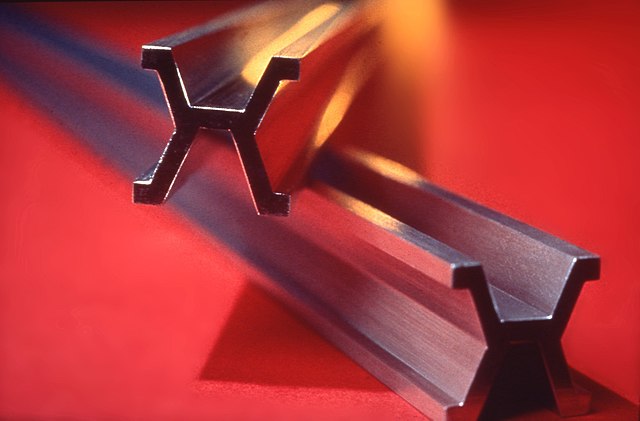Introduction to Iridium
The element iridium is an extremely rare metal. It’s a silvery metal that is quite brittle and is used in alloys to create a harder material. Iridium is also a good conductor of electricity. Most people know of the element iridium from the game Stardew Valley where you can create various precious products out of iridium. The element has actually led to development of one of the main theories on the extinction of the dinosaurs.
10 Fun Facts about Iridium
- The element iridium is the most corrosion resistant material that we know of!
- Iridium has the second highest density of all the elements on the periodic table.
- Iridium forms brightly colored salts. Due to this characteristic, its name comes from the Latin word for rainbow, Iris.
- Iridium is relatively unreactive. The noble gases are also unreactive. Thus, iridium is sometimes referred to as a “noble metal”.
- Some scientists believe that the reason that iridium is scarce in the Earth’s crust because due to its density, it sunk to the Earth’s core when it was molten.
- The element iridium is the 5th most expensive element in the world.
- Three tons of iridium are produced annually.
- Iridium is found in space more often than on Earth.
- The standard kilogram was created from measuring an alloy that was 90% platinum and 10% iridium.
- The ballpoint of pens are sometimes produced with alloys of osmium and the element iridium.
Iridium in the Periodic Table
Iridium has the atomic symbol Ir with an atomic number of 77. It is located in the d-block of the periodic table, between osmium and platinum. The elements rhodium and meitnerium are above and below iridium. The element iridium is the twenty-sixth element in the transition metals. It has an electron configuration of [Xe]6s25d7 . Additionally, the element has an electronegativity of 2.2 on the Pauling scale.
Iridium’s Use in Today’s World
The Element Iridium & Dinosaurs??
It sounds crazy but scientists actually use the presence of iridium in certain layers of the Earth to uncover what happened to the dinosaurs. In 1980, two scientists (one a physicist and the other a geologist) Luis and Walter Alvarez, proposed a theory for the extinction of the dinosaurs. The surface of meteorites contains more iridium than the Earth’s crust. Knowing this, the two scientists examined a deep layer of the Earth’s crust. It revealed a spike in the iridium level! This led the two scientists to believe that a massive meteor struck the Earth’s surface simultaneously depositing large amounts of iridium and eradicating the dinosaurs.

Iridium as a Hardening Agent
Since the element iridium is rare, it doesn’t have a lot of practical applications. However, it works great in collaboration with other elements that we call alloys. The most common of these in alloy with platinum. The resulting material is resistant to corrosion and tarnish and is extremely durable. Thus, the jewelry industry capitalizes on this and uses this alloy in the backing of luxury watches.

Iridium is also a transition metal, so it does have conductive properties. Thus, coatings for electrical contact points, sparkplugs for large machines such as helicopters and as electrodes in some experiments sometimes contain the element iridium.
Where is the Iridium Element Found?
Iridium is rarely found in nature by itself. Alloys with platinum groups commonly contain iridium. Canada, Russia and South Africa are the top producers of iridium from mining the sulfide layers of various igneous rocks.
When and How was Iridium Discovered?
English chemist, Smithson Tennant in 1803 discovered iridium. He took a sample of crude platinum (impure platinum) and dissolved it in an extremely strong acid. Iridium then deposited as a residue on the glass. Tennant also used this method to discover osmium! Tennant lived from 1761 to 1815.
Iridium in Chemistry – Compounds, Reactions, Isotopes, Oxidation States
Iridium Element Compounds and Reactions
- Oxides: IrO2
- Halides: IrF6, IrCl3, IrBr3, IrI3
The element iridium is mostly unreactive. However, halogens are extremely reactive and will react with iridium.
![]()
![]()
Additionally, when heated iridium can form iridium oxide, a black residue.
![]()
Isolation of Elemental Iridium
Platinum group ores typically contain the element iridium. Dissolving the ore in strong acid produces iridium oxide. The compound is then placed in another strong acid called aqua regia. Drying and burning the compound in the presence of hydrogen gas produces pur iridium.
Iridium Isotopes
The element iridium has two naturally occurring isotopes. The most common and stable isotope is iridium-77. The radioisotope, iridium-192, has a half-life of about 74 days.
Oxidation States of Iridium Element
Iridium can have a range of oxidation states from -3 to +9.
Properties of Iridium Element
- Atomic Symbol: Ir
- Melting point: 2446°C
- Boiling point: 4428°C
- Density: 22.56 g/ml
- Atomic weight: 192.22 g
- Atomic number: 77
- Electronegativity: 2.2
- Molar heat capacity: 25.10 J/(mol*K)
- Classification: transition metal
- Natural abundance in the Earth’s crust: 0.001 ppm
- Electron shell configuration: [Xe]6s25d7
- Stable Isotopes: iridium-77 and iridium-192
- Found naturally in platinum group metal ores
- Toxicity: non-toxic, but if exposed to iridium dust it can cause eye and throat irritation.
Where Can I Buy the Iridium Element?
Pure iridium is extremely rare and thus very expensive. For 100g of the element iridium, the average cost is 4,200 U.S. dollars. You can buy it from online sellers such as Luciteria.

